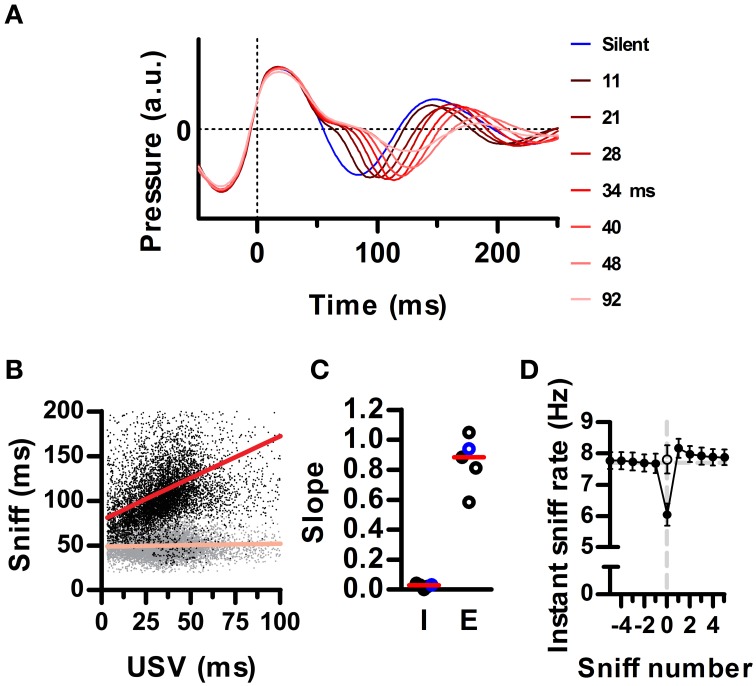Figure 3.
Ultrasound emission instantaneously lowers the sniffing rate. (A) Average waveforms for silent sniff cycles (blue) or cycles simultaneous to the emission of ultrasonic vocalizations of increasing duration (reds; vocal sniffs) for one example recording. Data was binned by ultrasound duration with bin centers labeled on the right. Traces are aligned to the onset of the inhalation (Time = 0). (B) Inhalation (gray) and exhalation (black) durations for individual vocal sniff cycles vs. vocalization duration. Same data as in A. Lines: linear regressions; R2 = 0.34 (exh) and 0.01 (inh). (C) Slopes for inhalation (“I”) and exhalation (“E”) regression lines for individual rats. Red lines: medians across animals. Values from B highlighted in blue. (D) Mean instantaneous sniff rate (1/sniff duration) aligned on a vocal sniff (sniff number = 0). Calculation of sniff rate for non-zero sniff numbers excludes vocal sniffs. Instantaneous sniff rate of vocal sniffs is lower than that of the preceding silent sniff (p < 0.001, paired t-test). Open circle: sniff rate computed after subtracting vocalization duration from the period of the vocal sniff. (Means ± s.e.m., N = 5 rats).

